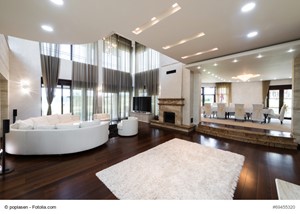Email: [email protected]

One decorating principle that’s a huge help for any homeowner is that of layered lighting. This is the different aspects of lighting that you’ll use in different rooms of your home to complete your lighting needs. The layers of light create a basis for the design of the room. These three main aspects of lighting also have a practical purpose which is nice as well. Below, you’ll learn more about the three main components of lighting for any room of the house and how to best use them.
Ambient lighting is often the base of where people start with their lighting design in a room. This type of lighting allows you to get the overall feel for a space. The brightness level should be good enough for anyone to walk through the room without walking into things. The illumination may not be bright enough for activities that require a lot of focus like reading or chopping vegetables.
If you think of a retail store and how the shiniest things have the brightest lights focused on them, you’ll discover that you can use this type of lighting right in your home. Think of a chandelier hanging over a massive dining table. Accent lighting is usually for decorative purposes. The lumens that are given off are typically not enough for any other purpose than to attract attention to the item the light is shining on. This type of lighting is best used for things like display cabinets, statues, and china closets. The bottom line is that the accent light will add some drama without actually adding much practical use.
This type of lighting is important because it’s what ensures that you won’t chop your hand off while you’re chopping up vegetables in the kitchen. Task lighting varies widely from room to room and can be anything from a desk lamp to a reading lamp to lights on the vanity for shaving and putting on makeup. Task lighting is all about being functional. When you’re trying to decide where to put your task lights think of everything from safety to convenience. The last thing you should worry about with task lighting is the look. While these lights are great under cabinets, for example, so the more creative you get with where to place your task lighting the better the look will be.
Using this simple yet useful design principle can help you to light your entire home correctly. The right lighting can truly transform a space and give it the depth that it needs.
